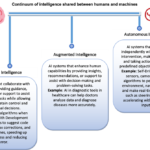IIL Editorial
https://iilearning.sharepoint.com/:i:/r/sites/marketing/Shared%20Documents/2022/IIL%20Blog/The%20Six%20Pillars%20of%20Project%20Management%202030%20Article/Pillar6.png?csf=1&web=1&e=r1CQo3
By Harold Kerzner, PhD and J. LeRoy Ward, PMP, PgMP, PfMP
Introduction
For more than four decades, we have been fortunate to teach project management courses to undergraduate and graduate students, as well as to conduct seminars and webinars for practicing project and working professionals worldwide. Our greatest joy, as each session comes to a close, is asking participants what they think project management will look like in 2030.
The predictions articulated are generally more subjective and intuitive, rather than objective. Undergraduates and students with minimal project management experience, provide answers from the perspective of standing on the ground floor of the building looking up. Their responses usually revolve around changes they might see in the inputs, outputs, and tools and techniques, discussed in the PMBOK® Guide.
Graduate students and adult learners, and those with some project management work experience, or in executive leadership positions, provide the exact opposite perspective; that is, they are on the top floor of the building looking down to where the projects are being executed. Their responses, which are summarized to some degree in this paper, address how project management might change as it interacts with corporate governance.
This paper is structured around the six pillars of project management that are currently being erected in companies worldwide, across developed and emerging markets nations. Why are they erecting these pillars? Because they recognize the benefits and strategic importance of successfully implemented project management and take advantage of all it has to offer. However, not all companies have erected all six pillars. But by 2030, this could become commonplace.
Pillar #1: From Traditional (Operational) to Strategic Project Management
In the 20th century, project management practices and techniques were employed mainly on operational or traditional projects. In many firms, project management was not regarded as a career path but viewed as an activity an individual performed in addition to their “normal” job. Many executives feared that project managers would attempt to make decisions that were reserved for senior management. As such, a project sponsor, usually from the senior levels of management, was assigned to each project and vested with the authority to make all strategic and business decisions related to the project. Project managers had some input into the technical decisions. Sponsors, rather than project managers, were often the interface with the customer and stakeholders.
Senior managers appeared to have very little trust in project managers. Project management was viewed by executives as a tool for the command and control of traditional projects. Projects that were of strategic importance were most frequently assigned to functional managers whom executives tend to trust more than the project managers.
However as more trust was placed in project managers, their roles and responsibilities changed as seen in Exhibit 1. For example, project managers were permitted to participate in competitive bidding activities, prepared statements of work, developed schedule and cost estimates. No longer were project managers simply following orders.
Project managers were also permitted to participate in business-related decisions. They were given a “line of sight” to senior management to ensure that their projects’ objectives were aligned with the organization’s strategic goals.
Project managers were now managing strategic projects. The importance and ability of the project manager to reap the benefits of sound and proven project management practices are now becoming apparent to everyone.
Exhibit 1. From traditional to strategic project management
Pillar #2: Project Management Becomes a Strategic Competency
As project managers assumed greater responsibility for strategic projects, many executives realized that they were managing most, if not all of their business, by projects. If that was indeed the case, they concluded they simply needed to get better at it.
As the benefits of project management became more apparent, executives recognized the necessity to establish project management as a formal career path position to ensure they had a stable and capable workforce to undertake the important work of the organization. Among other benefits, this resulted in the ratio of project successes to project failures increasing significantly in most firms.
Many companies conduct an internal assessment annually to identify those career path positions that are critical to a firm’s success and future viability. Today, project management is making the shortlist of one of the four or five career path positions that have been identified as critical for the firm’s continued success. Once executives recognize the value and importance of project management, it is seen as a strategic competency that needs to be cultivated.
Exhibit 2. Project Management becomes a strategic competency
Over the years, we have worked with many corporations in their journey to excellence in project management through a variety of professional development activities. For example, many firms have established a structured project management career path for their project managers. Why? Because projects support and help bring to fruition their corporate strategy which, generally speaking, provides for greater market share, increased revenues and profits, improved quality, and higher customer satisfaction, as well as other tangible and intangible benefits.
But that’s all. A project management career path also encourages professionals to learn, grow, and take on more challenging assignments. Project professionals may, over time, transition to executive-level positions based on their project management experience and performance.
However, one of the risks with identifying a career path as a strategic competency is the challenge of replacing employees who are promoted, retire, or leave. The solution is usually an investment in succession planning activities. Succession planning has historically been done by identifying and training backup candidates for senior management positions. Companies well known for their succession planning and executive-talent development practices include GE, Honeywell, IBM, Marriott, Microsoft, Pepsi, and Procter & Gamble.
In project management, most companies see the necessity to create a “talent pool” from which project managers can be selected, trained, and subsequently assigned to more challenging assignments. If done correctly, employees within the firm will see the opportunity to meet their career development goals internally, reducing the often difficult and costly process of recruiting externally. In short, a project management career path can be a win-win for both the company and its project managers.
If project management succession planning is to succeed, the firm must focus in three areas:
- Clearly define the competencies needed for project manager development by identifying the skills needed for the present and the future.
- Make sure employees know of the opportunities available to them to advance to positions of increasing levels of responsibility (and compensation!).
- Keep employees updated on lessons learned and best practices.
Pillar #3: Prioritizing Project Management Skills as a Strategic Competency
Project management educational programs that focus on managing traditional or operational projects focus on the content in the PMBOK® Guide knowledge areas. This is important however, educational programs for managing strategic projects require learning
Fuente: PMideas (The Six Pillars of Project Management – a Path for 2030).






























